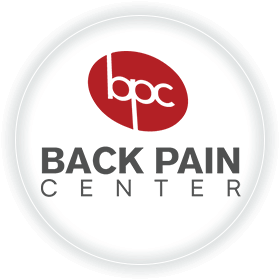If you have a neck problem, you may actually feel it somewhere else. Pain, numbness, tingling, and weakness in the shoulders, arms, hands, and fingers can often be a sign of a neck issue.
So how do you know if the problem is coming from your neck or somewhere else? Keep reading to learn about common causes of neck issues and how our care can help.
Common Causes of Neck Problems
 Many people have a muscle strain or ligament sprain caused by sleeping wrong or looking in one direction for too long. Indicators that you may be dealing with a sprain or strain include pain with range of motion or when someone else tries turning your head for you.
Many people have a muscle strain or ligament sprain caused by sleeping wrong or looking in one direction for too long. Indicators that you may be dealing with a sprain or strain include pain with range of motion or when someone else tries turning your head for you.
Disc problems like degenerative disc disease, herniated discs, and blown discs often cause pain. Poor posture, unhealthy work habits, or physical activity can cause the cushions between your vertebrae to wear down. As the bones in your spine become closer together, your nerves have less room to operate and may send symptoms down your arm.
You may also experience trigger point referral from tension in your trapezius muscles or at the base of your skull. Overusing these muscles by hunching over a computer or carrying stress in your shoulders results in tightness and pain.
Detailed Assessments and Exams
When you come in, our chiropractors will do a thorough assessment and health history. We’ll rule out any red flags before doing a detailed orthopedic and neurological examination. Chiropractors work best with our hands, so we’ll palpate the area to feel for any trigger points, muscular tension, or joint restrictions.
We always assess breathing, since how your diaphragm operates affects everything from muscle tension and trigger points to strength, sensation, range of motion, motor skills, tone, and tension.
Personalized Care You Can Count On
At each visit, we’ll figure out which joints aren’t moving properly, and use targeted adjustments to increase your mobility before stabilizing the area.
Next, we’ll follow up with DNS exercise to teach your brain to adapt to your new range of motion. As you continue to progress, we’ll keep assessing trigger points to ensure you’re improving and determine whether you could benefit from dry needling, traction, or the McKenzie Method®.
Equipping You to Invest in Health
Our chiropractors will also go over home exercises to improve your recovery. A simple foam roller can help relieve tension in the mid to upper back, while an at-home traction unit can provide short-term relief between visits.
It’s Time to Relax and Let Go of Pain
If you’re feeling tension, pain, numbness, or tingling, it’s time to make an appointment. Our team of chiropractors will carefully evaluate your condition to determine the source of dysfunction and get you back to optimal health.
CONTACT US »
